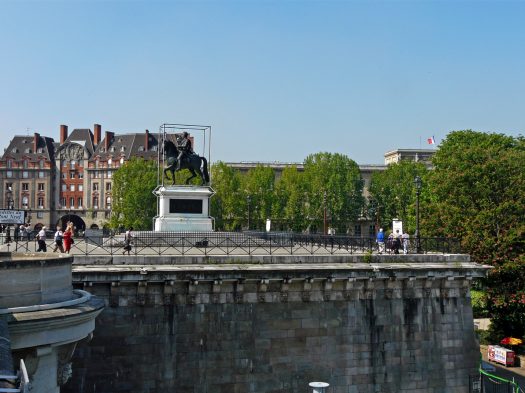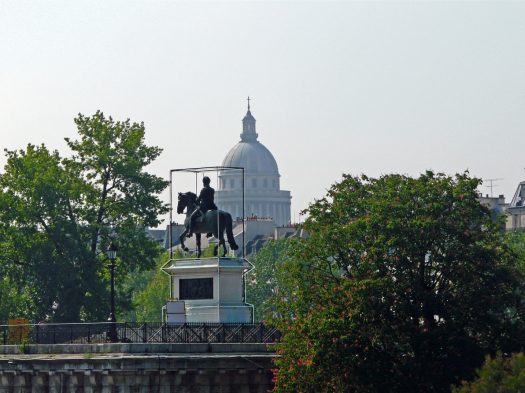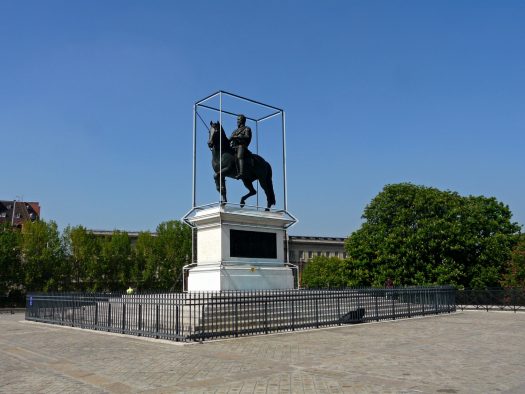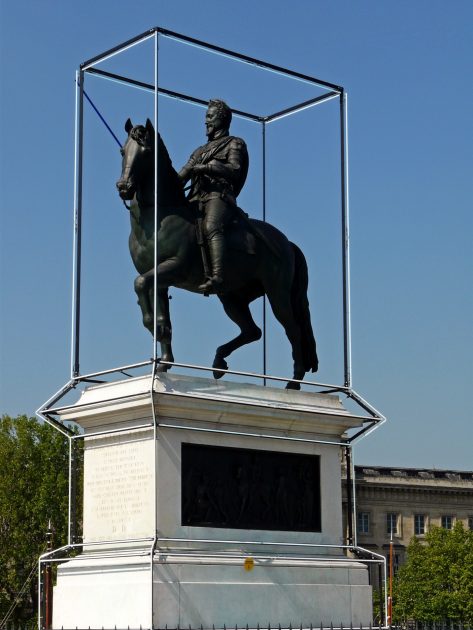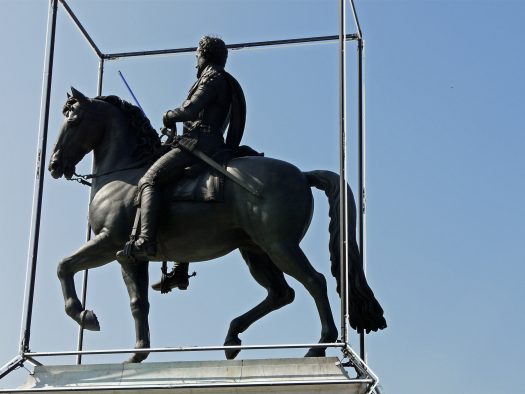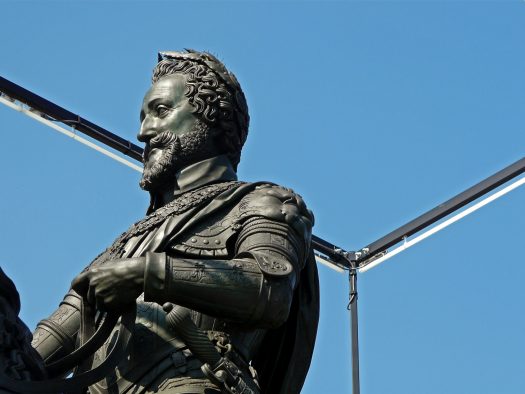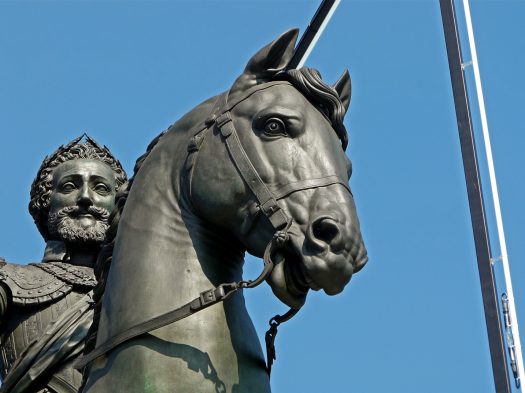The first ruler to have a freestanding monument in Paris was the founder of the Bourbon dynasty, Henry IV (1553–1610), probably the most popular king of France. His second wife was Maria de Medici, patron of the arts. She initiated this statue, recalling those of her own family in Florence. Maria turned to her uncle, Ferdinand I, to procure the services of the Flemish sculptor Jean Boulogne, better known as Giambologna. He started the work in Florence, but died during the process. His pupil and collaborator, Pietro Tacca, finished it and modelled the king’s portrait in contemporary armour, astride a horse reproduced from Giambologna’s equestrian statue of Ferdinand I in Florence. The statue was completed in 1613. On its way to France, the ship foundered near Sardinia, and it took a year to recover the statue. By the time the statue of Henry IV was inaugurated in 1614, he had already been assassinated four years earlier.
The statue was placed on the Pont Neuf in Paris, constructed during his reign. The original statue was destroyed during the revolution in 1792.
The sculptor Francois Frédéric Lemot produced a copy in 1818. He took the cast from a mould made from a surviving cast of the original. It is notable that the bronze for the Henry IV statue was provided by two sculptures of Napoleon (in Colonne Vendôme and Boulogne-sur-Mer) and one of his general, Louis Desaix (in the Place des Victoires), which were melted down for the occasion.
Henry IV, the ‘Good King of France’, proved to be so popular that the cart transporting the statue to its final place was not only pulled by horses and oxen, but also by enthusiastic Parisians.
The statue was restored in 2004. On this occasion, seven little boxes were found inside the statue, containing a report of the inauguration, a list of contributors and some medals. There was a story that an ardent Bonapartist had hidden a statuette of Napoleon inside the statue, but this proved to be a legend.
